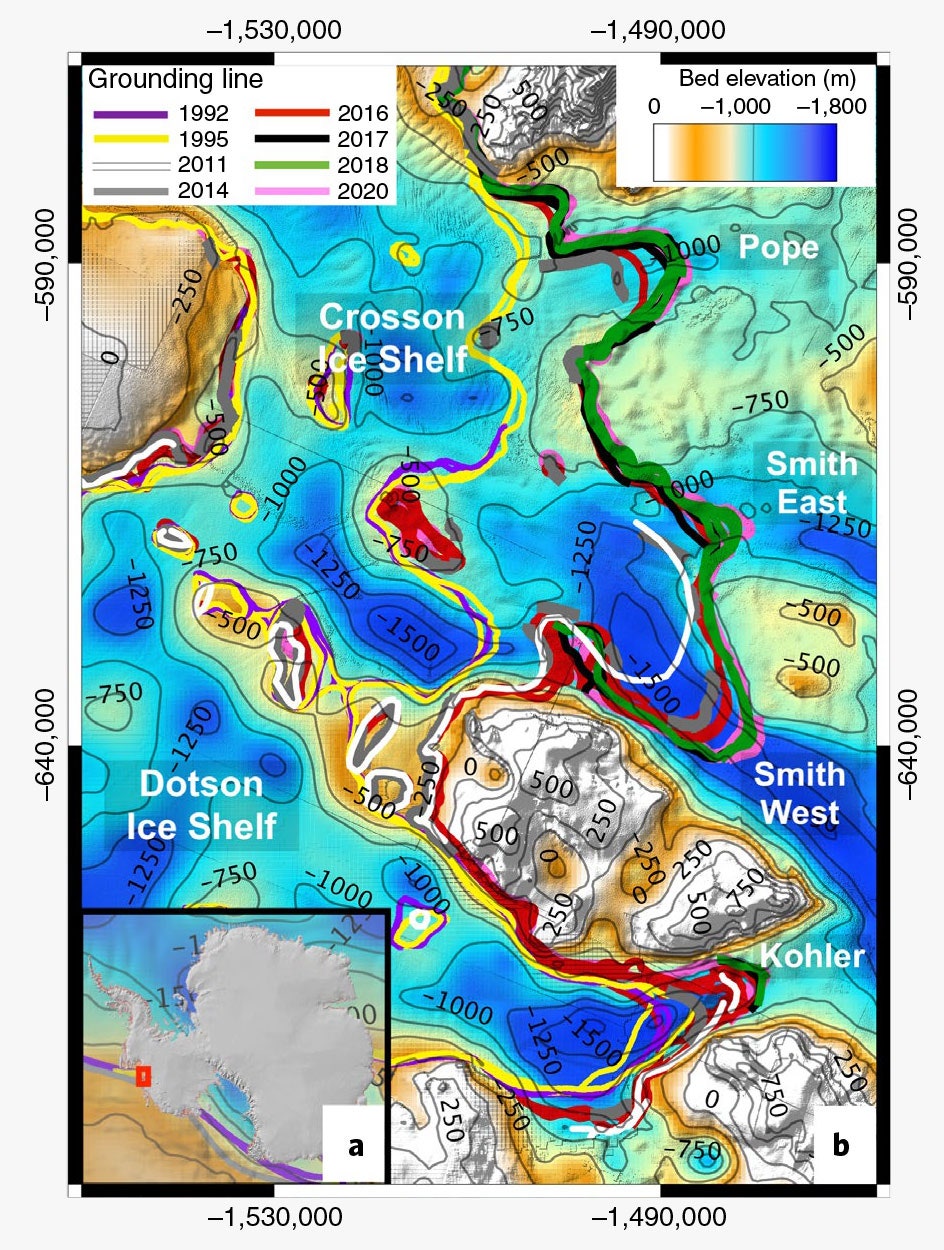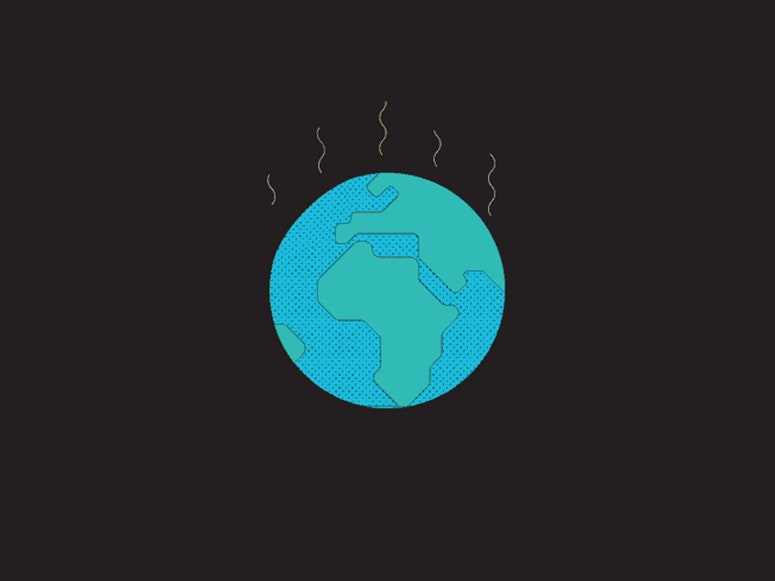Antarctica’s glaciers are under threat, but not in the way you’re thinking: The problem isn’t so much that the sun’s beating down on them, but that the warming sea is upper-cutting them. The bit of a glacier that’s resting on land is known as an ice sheet, and the bit floating on the ocean is the ice shelf. The exact divider between them, where the ice lifts off, is called the grounding line. As the world rapidly warms, that line is falling back. And as a result, Antarctica’s glaciers may be degrading far faster than scientists anticipated.
Think of an ice shelf as a cork that’s keeping the rest of the glacier, that ice sheet, from sliding into the ocean. The Florida-sized Thwaites Glacier, for instance, is known as the “Doomsday Glacier” for good reason: It’s attached to a seamount off the coast and is holding back ice that would raise global sea levels by two feet if it all melted. Last month, scientists reported that Thwaites’ ice shelf could crumble in three to five years.
But current glacier melt models don’t account for a phenomenon called tidal pumping. Whenever the tide rises, it heaves Thwaites’ ice sheet upward, allowing relatively warm seawater to rush farther upstream underneath the glacier. That drives melting along its belly, making the ice sheet more prone to fracture. “It means that warm water that is at the bottom of the glacier can infiltrate up to several kilometers upstream,” says University of Houston physicist Pietro Milillo, who’s studying Antarctic glaciers. “And all of the sudden you start realizing, ‘Wait a minute! The models that actually predict the future state of the glaciers do not have these kinds of phenomena. They basically have a grounding line that is fixed.”
Last month, Milillo and other scientists reported that tidal pumping is forcing the rapid retreat of the grounding lines of other West Antarctica glaciers—Pope, Smith, and Kohler. Using a satellite that fired radar waves at the ice, the scientists could detect minute changes in elevation along each grounding line. “When the tide gets higher, the entire ice shelf lifts up,” says Milillo, lead author of a paper describing the work in the journal Nature Geoscience. “So by measuring how much it moves at the top because of the tides, we’re able to actually see where the grounding line is at the bottom of the glacier.”
The colored lines show the rapid retreat of the glaciers’ grounding lines over the last three decades. Thwaites isn’t pictured, but it’d be above Pope.
Illustration: P. Milillo; E. Rignot; P. Rizzoli; B. Scheuchl; J. Mouginot; J. L. Bueso-Bello; P. Prats-Iraola; L. Dini
The measurements are dire. In 2017, Pope’s grounding line fell back over two miles in just three and a half months. Between 2016 and 2018, Smith logged a mile and a quarter retreat a year, while Kohler pulled back three quarters of a mile. And when that grounding line starts retreating, it initiates a cascade of catastrophes: The more of the glacier’s underside that’s exposed to seawater, the more melting. “Once you trigger a subtle retreat, they’re going to just keep retreating and retreating, which means that they’re going to keep speeding up,” says Milillo. “Speeding up the glacier acts like a chewing gum: The glacier thins, and by thinning also you have a speed-up, because while not in contact with the bed, there is less resistance to the flow. Which means the glacier [movement] will accelerate and in turn will inject more ice into the ocean.”
The grounding lines of these neighboring glaciers might even withdraw to the point where they actually merge. “That will take a long time, probably. But if that were to happen—I’m not saying it’s going to—that’s when you get this mega problem,” says Peter Washam, an oceanographer and climate scientist at Cornell University, who studies Thwaites but wasn’t involved in this new research. “The fear with Thwaites is that as you move upstream, it pulls such a large area of ice that once you begin to pull that quickly, you can sort of envelop the glaciers around it.”
Think of it like a watershed, in which several creeks drain into a larger river, but instead of liquid water, it’s (slowly) flowing ice. “If you unplug Thwaites, you’re pulling the cork out of the drain,” says Lizzy Clyne, a geophysicist and glaciologist at Lewis and Clark College, who researches the glacier but wasn’t involved in this new work. “Then you allow the ice that was previously flowing in different directions to be like, ‘Well, the wall behind me went away, so now I’m going to fall back into Thwaites.’ And you can therefore in theory tap on a lot more ice.” If Thwaites and its surrounding glaciers are destroyed, collectively they could add 10 feet to sea levels.




